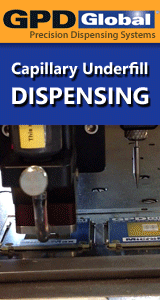Printed Circuit Board Assembly & PCB Design Forum
SMT electronics assembly manufacturing forum.
- SMTnet
- »
- Electronics Forum
- »
- Moisture Sensitive part - baking
Moisture Sensitive part - baking
Views: 18216
![]() I have an MSL3 part (a relay) supplied in tape and reel. Fr...
- Aug 24, 2007
by
pete
I have an MSL3 part (a relay) supplied in tape and reel. Fr...
- Aug 24, 2007
by
pete
![]()
![]()
![]() Oh, for a second there I thought it was 257 C, not F. Solde...
- Aug 24, 2007
by
jmelson
Oh, for a second there I thought it was 257 C, not F. Solde...
- Aug 24, 2007
by
jmelson
![]()
![]()
![]() We're unfamiliar with such component dryout requirements. C...
- Aug 25, 2007
by
davef
We're unfamiliar with such component dryout requirements. C...
- Aug 25, 2007
by
davef
![]()
![]()
![]() If plastic Carrier Tape (CT)/ emboss tape, is made by:
a)...
- Aug 25, 2007
by
GSx
If plastic Carrier Tape (CT)/ emboss tape, is made by:
a)...
- Aug 25, 2007
by
GSx
![]()
![]()
![]() According to J-STD-033 Table 4-1, the bake out time to resto...
- Aug 30, 2007
by
blnorman
According to J-STD-033 Table 4-1, the bake out time to resto...
- Aug 30, 2007
by
blnorman
![]()
- SMTnet
- »
- Electronics Forum
- »
- Moisture Sensitive part - baking







